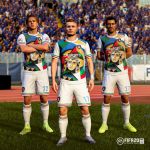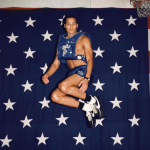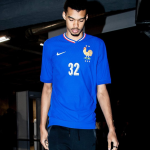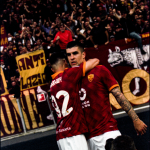
Can it be time for eSports?
How the pandemic is improving the reputation of virtual sport
April 15th, 2020
The world has stopped, is slowing down, experiencing a phase of waiting and precaution, hoping for times when normality will recover and all sectors will return to full speed. However, not everyone stopped or slowed down. eSports are definitely part of this category. In any situation, even in the tragic ones, the glass is half full for some and less empty for others. The eSports belong to the first half, not so much as regards the sales or production volumes, but for the reputation that they are managing to build and above all for the skepticism that gradually, brick after brick, are breaking down. The initiatives are many and affect almost all sports, but seeing so many professionals - the last players who will start the "Stay and Play Cup" today - celebrating a world that has always been seen as the antagonist of sport is something new.
The possibility of seeing eSports one day among the 46 disciplines of the Summer Olympic Games or among the 39 disciplines of the Youth Olympics is a timeless discussion. There will always be those who will take the side of sport in its most classic form and those who will take the side of progress and innovation. Yet during this pandemic, a small step forward has been made - although it looks more like "one small step for a man, one giant leap for eSports". For eSports, always better to specify, we don't mean the simple "play the PlayStation / Xbox" but it means "play video games at an organized and professional competitive level". It is a subtle but at the same time decisive difference. It is this specific definition that really makes them sports and not a trivial pastime.
The growth phase we are witnessing now has not been immediate, quite the contrary. At the historical moment when the great novelty of this virtual world that managed to combine fun and professionalism arrived on the market, a different boost was certainly expected, a push that could immediately perceive the power of the phenomenon. Growth was decidedly slower than the roadmap, also thanks to an all too innovative vision of the movement that did not take root immediately. Today, however, the direction is very different and the growth curve is experiencing new peaks. New technologies, ever-increasing investments, the desire and the courage to explore "parallel universes" that can cross each other have been fundamental pushes for the centrality of eSports.
The virtual reality of eSports is at the center of many people's days and is a tool that can help in those moments of absolute and endless boredom. The dynamics and structures behind a complex and often abstract world, however, are imposing and certainly not negligible. They won't say a lot to the average video game player, but they represent new frontiers for many sectors. For example, they have an impact not so indirect on brands that decide to join a video game - and consequently on sport fashion. The most evident and recent case concerns NBA 2K and two sport system giants such as adidas and Nike.
Utah Jazz star Donovan Mitchell is one of the new faces on which adidas basketball focuses more. With the forced stop of the NBA, even the launches of the new game shoes is delayed, not being able to show them on the largest sports stage in the world. But considering and considering the new moves and new strategies of the League, adidas has decided to launch and to preview for "The D.O.N. Issue # 2" precisely through the most famous and widespread game of basketball in the world.
The next @spidadmitchell sneaker is on the way pic.twitter.com/xrPmLzPBha
— B/R Kicks (@brkicks) April 11, 2020
adidas has therefore cleared the myth of the old-fashioned release, taking advantage of the positive trend of eSports to be innovative "creators". That of the D.O.N. Issue # 2 don't represent, however, a unicum. Nike was among the first to take advantage of the privileged relationship it has with the NBA and consequently also with the reference videogame. The very first case concerned LeBron James, who launched one of the many colors of the LeBron 17 right via 2K, adapting the name of his signature to that of the game's manufacturer. At first there was no certainty that they were really existing sneakers, but thanks to the NBA 2K20 x Nike Gamer development, fans had the opportunity to buy the "Bron 2K" only after completing challenges in MyPlayer mode.
Nike is teaming up with @NBA2K to drop 10 “Gamer Exclusive” sneakers inside the game, starting on October 29th. The first GE is a dripped out purple version of the LeBron 17, dubbed the ‘Bron 2K, which players can try to unlock and buy — if they get lucky. https://t.co/hZHLlK52xf pic.twitter.com/uIxp8WBDFB
— Edgar Alvarez (@abcdedgar) October 21, 2019
Last, but not least, the case of Giannis Antetokounmpo's "Nike Zoom Freak 1 All Bros 4". The colorway "All Bros 4" is in effect a NBA 2K exclusive and this limited edition has also appeared for the first time ever in a video game. As with the "Bron 2K" purple, the signatures of The Greek Freak can also be unlocked by winning challenges in the My Player Nation Playoff mode.
Win one for the bros.
— Nike Basketball (@nikebasketball) April 11, 2020
The latest Gamer Exclusive challenge is here. Unlock the Zoom Freak 1 ‘All Bros 4’ GE by winning a MyPlayer Nation game on @NBA2K.
Learn more: https://t.co/4GsmOHEa3z #ZF1 #NBA2K20 #SNKRS pic.twitter.com/02QCRfiDMA
If on the one hand the NBA is probably the most developed league in almost all respects, football and the world of gaming that gravitates around is certainly not looking. The series does not go to extremes as seen in the case of NBA 2K, but uses innovative strategies and often converts what is virtual into real. Although controversies between clubs and EA Sports are always the center of attention, FIFA has managed to break down prejudices and skepticism to get to the heart of the most active fans by creating platforms dedicated to design, creating links between game and reality and capturing attention of famous clubs such as Manchester United, Real Madrid, Bayern Monaco and Juventus.
In 2018, Manchester United officially released an extravagant leopard-print kit that didn't go unnoticed. At the same time adidas launched a campaign with Jesse Lingard in which this slightly sober uniform reappeared. In the following hours - when hell had already broken loose among the millions of Red Devils fans worldwide - it was announced that the kit was the fourth of the current season, but will never be worn in an official game. Although sold - available for "only" £ 113 - the kit was only used for United games in Ultimate Team mode. The same path has been taken, as mentioned, also by Real, Bayern and Juve.
The last step that moves in this direction is an upgrade of the way to approach game uniforms, an increasingly engaging world and always an element of differentiation between gamers. FIFA, implementing the online game modes and practically allowing players from different hemispheres to play against each other, has intercepted this trend and has inserted a real section within the game in which it is possible to create from scratch your own kit.
So eSports are an excellent tool to fill the endless quarantine days, but at the same time they have an impact on the world of sport fashion. The roads that adidas and Nike have never traveled before, the development of new videogame house technologies and the launch of kits made specifically for the eSports version of a club are all signs and symptoms of a booming world and a reputation which is improving step by step.
As brilliantly explained by Federico Principi in a focus published on Ultimo Uomo on virtual Formula 1 - which is literally making everyone think again on augmented reality - eSports can really act as a link between what is real and what is virtual, among which which is sport and what is eSport, between professional sportsmen and amateurs who have fun with the joystick in their hands. The marketing of sports clubs, brands and all operators work in the sport system sector, has by now internalized the importance of eSports and pursues strategies that travel in parallel with those of a team's sporting seasons. Even the federations - which have always been a bit tricky for innovation - are now getting involved and, indeed, are taking action to promote events and special occasions.

Even the global economic investment in the eSports sector cannot be underestimated: from Formula 1 (with Ferrari boasting a virtual team made up of guys who alternate hours and hours studying inside the simulators and who travel the world to participate in the official matches) to the individual football clubs that are expanding their infrastructure also in this perspective (opening to all effects of the "nurseries" to grow the gamers of the future). The combination of amateurs, gamers and pros represents a turning point that this pandemic is facing us. Seeing Leclerc fighting David "Tomzilla" Tonizza as if he was fighting for pole against Lewis Hamilton really makes one understand the relevance of a movement that can no longer be overlooked.
The fight against skepticism continues, because the gaming culture has not caught on in all environments. Many continue - and continue - to look at eSports with suspicious eyes, considering them a foreign body to sport and persevering with a conservative attitude. A vision that can be shared only if in the last 15-20 years you have been walking with Rocket, Groot, Star-Lord, Nebula, Gamora and Drax around galaxies. eSports can and must be seen with a gaze that looks to the future, considered a novelty and at the same time an opportunity, a form of completion of sport and not an idea from which to separate and distance oneself. It is undeniable to affirm its diversity, it is natural to conceive its differences, but these must not necessarily create a north pole and a south pole that will never be discussed. ESports and sports in the traditional sense of the term are not necessarily the opposite of each other.
Returning to the half-empty glass, it is always important to put a question in the right light. As one of the modern gurus like Larry Winget recalls "the glass is half full or half empty? Answer: Who cares? Does it really matter if the glass is half full or half empty? The question is whether or not you quench your thirst".




















